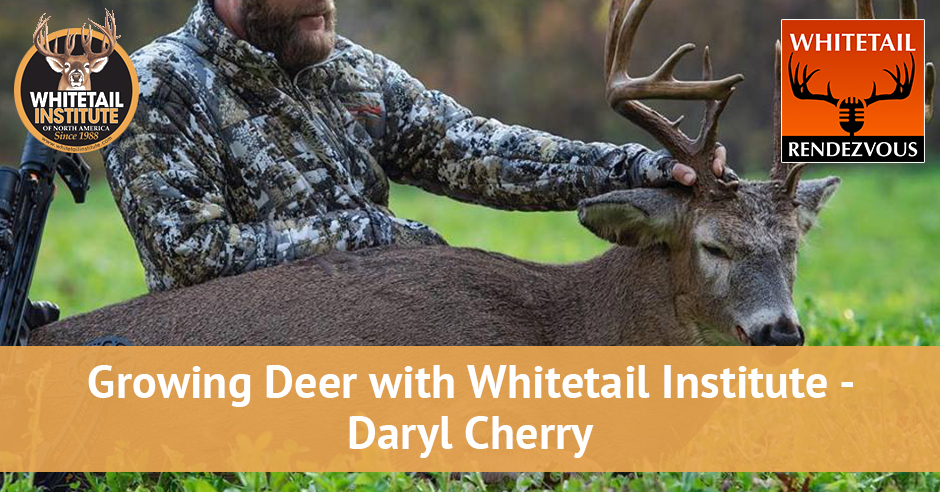
Believing how “research equals results,” Daryl Cherry, director of sales at Whitetail Institute, brings us up to speed with the company – from when they started to what the future looks like. Showing us the message to become better land stewards and managers of our own private herds, he shares how you can better read and understand the tag, most especially when it comes to buying seeds. He talks about making a food plot while giving his insights on where we should be at right now in the food plot cycle of the year.
—
Listen to the podcast here:
Growing Deer with Whitetail Institute – Daryl Cherry
This is a special Iowa Deer Classic promotion with Whitetail Institute‘s Daryl Cherry, who is the Director of Sales. Daryl, welcome to the show.
Thanks for having me.
It’s exciting and I get to talk to Steve. He said there have been some things going around Whitetail Institute and there had been some changes. Why don’t you just bring us up to speed when Whitetail Institute started and what the future looks like?
Whitetail Institute was originally started by Ray Scott back in 1988. It was just a dream and a vision that he had to grow bigger whitetails and give them proper nutrition to maximize their genetic potential deer nutrition. He teamed up with some scientists and started engineering. Originally, it was our clover. That was our flagship product even to this day. That’s where we got our start. As you know, over the course of the last 30 years, it’s morphed into where it is now. This category in our industry is continuing to grow and just booming. Thanks to people like you and the trade shows and whatnot for getting it out to the public and allowing them to become better land stewards and managers of their own private herds in their leases or land that they may own. We have stuck to what got us here, which is our research and development. Our slogan is, “Research equals results.” We firmly believe in that.
There are some changes that have gone in the past. We were acquired by PRADCO Outdoor Brands. Some of their lines that you might be familiar with are Moultrie, Knight and Hale, Summit Treestands, Code Blue Scents, just to name a few. We were the second acquisition that they made in the year 2018 along with Texas Hunter Products. It’s a feeder company based in Texas. I’m excited to be a part of that team. They’ve got some good stuff working over there and plans to grow all the brands as one solid unit. All the while, keeping the focus on what got Whitetail Institute where we are now with the success we’ve had, which is our research and development along with the customer service that we’ve always prided ourselves in providing. We have a biologist on staff that are answering calls. We have a knowledgeable sales team in and out of the office.
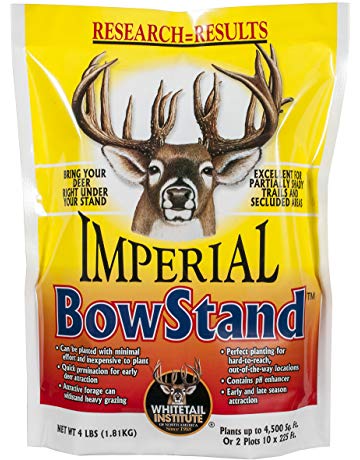
Someone can call our office at any time and go in and give all the questions they needed answered. It’s not just our sales team that’s answering the phones. You wouldn’t be surprised to dial into the office and Wilson or Steve may answer the phone. You could be talking to one of the sales guys, the biologist or one of the previous owners. It’s always been like that. Everybody wants to chip in and do their part. It is a lot about knowledge and trying to train people and educate people. Thanks to several multimedia channels nowadays, it’s a whole lot easier than it used to be. There’s still a lot of information out there to get to the public. We’re trying every day to get better at that as well as develop the best deer plot seeds and nutritional supplements that we can provide.
One thing in a warm-up that we talked about and I want to underscore this because it’s now February 2019. People are thinking about, “I’ve got to buy some seed and I’ll get seed at the big box store. I’ll get it here at a co-op or wherever.” What I’m getting at is the importance of being able to read the tag and understand what that tag says. If you have coatings on your seed, that can take up to 20% of the whole bag. Take that off at 25 pounds and all of a sudden, that’s five pounds of a coating. Is that true statements or is that just law I picked up along the way?
No, that’s not a true statement. It is one that you hear a lot. You can read all over the internet and you might hear other podcasts that have guests on there that might talk about seed coatings and their fillers and such. They’re there for a reason. There are nutrient packets and inoculants and various things in the seed coating. The seed coatings are there to provide a binder for those products to the seed. These are things that help germination. They help the survivability of a young plant. Seed coating is not an attempt to say, “Let’s cheat the customer by bulking out this thing.” Reading these tags, you see percentages and you think this and that. One thing that the public doesn’t know and they’re not told is, what you see and think you know is not exactly the true number that you’re thinking as you’re looking at if we’re talking about percentages and various things like that. When you get into clovers and some of these small seeds, people don’t understand how many seeds per pound are in clover and brassicas compared to something like wheat, oats, rye or your bigger type seeds and stuff like that.
Don't hold it against the box store that you're getting cheated because you're buying in at a big box. Share on XIt’s important to look at the tag and it’s okay to read it. That’s something that we have to put up there for regulatory purposes for various things. To your original question, just because it’s got a seed coating does not mean that any company, not just Whitetail Institute, is trying to pull the wool over someone’s eyes and give them less seed. There is a reason for that seed coating. On our lagoons, we have inoculants in there. The large percentage of our coated seeds we have what we call Rainbond and it’s a coating that helps with seedlings survivability. When you’ve got a new seed, any moisture gets trapped in the Rainbond and it keeps it around the seed itself. A lot of times you could go out there and plant and it could get a quick rain or there might be some moisture in the soil, but then it dries out. If that seed starts to germinate and you don’t get any more rain and it becomes dehydrated, it could die. The point of the seed coating is it’s going to hold some moisture around that plant. That new seedling that’s trying to get going has a little bit of insurance policy to help it get going and survive a little bit of time without some rainfall on it. It gives it that extra boost. It’s good. It doesn’t last forever. It’s not foolproof, but it does have its place. To your question, seed coating is not a bad thing.
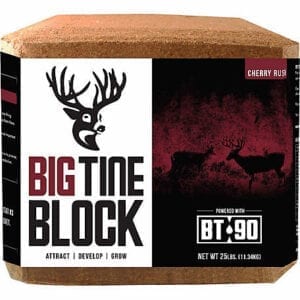 What is a good thing? Help my readers because there is a lot of information out there that people say, “You shouldn’t have this.” Sometimes you go to a big box store and you don’t get the percentage of seed that you thought. If I’m buying ten pounds of seed, how much of it is seed and then fillers and all the other things that you hear about?
What is a good thing? Help my readers because there is a lot of information out there that people say, “You shouldn’t have this.” Sometimes you go to a big box store and you don’t get the percentage of seed that you thought. If I’m buying ten pounds of seed, how much of it is seed and then fillers and all the other things that you hear about?
You’re going to see the percentage on the back of the bag and it’s going to give you a straight answer as to, “You’re getting this amount of seed versus this.” It’s hard because it all depends on the seed variety that’s in the bag. All of our seeds are mixes and most of our competitors are the same way. They’re going to have multiple seed varieties. Trying to pinpoint, “You’re getting this amount,” is nearly impossible for a consumer to stand there in the store and calculate. We’re selling the same seed to a box store that we’re selling to anyone else in our Whitetail Institute website. Don’t hold it against the box store that you’re getting cheated because you’re buying in at a big box. Some companies make different varieties for this and that. We’re not putting something in the bag for a box store that’s different than what we’re putting in the bag for independent dealer.
On your website, does it have a breakdown of the tags?
We do not list the actual seed tags on the website. A guy can go down a rabbit hole with those seed tags because what he thinks he’s reading is accurate. Simple math, numbers and percentages aren’t exactly how it all equates out when you start talking about why this seed might look like it’s got a smaller percentage. For example, you were going to mix brassica and oat in a mix. We have a mix that has that in it. There are less seeds per pound in oats than there are in brassica so you’re going to have a smaller percentage appearance on that tag than you are with oats. However, when that guy goes out there and plants, there are so many more seeds per pound in a brassica. The coverage is going to take place. It’s all about seeds per square foot that a pound can cover. I can’t reiterate that it’s not that anybody’s trying to fool it, it’s just that the general public doesn’t necessarily know the seeds per pound and how those percentages come up with. If you want to see, go google how many pounds of seed is in a pound of clover. It would blow your mind. You would never, in your wildest dreams, have any idea that there are that many seeds in one pound of clover.
I think it’s thousands, isn’t it?
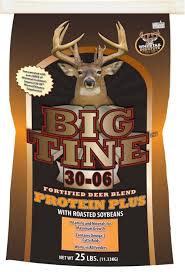 Yeah, it’s thousands. The general public is not going to have that knowledge just off the top of their head, nor should they. Seed growers and food plot companies know that because that’s one of the things that go into us making a successful mix. It’s not competing with itself out in the field. One of the questions that we get all the time is, “I’m going to mix this bag of clover and I’m going to mix this bag of turnips together because that’s the two things that I want out in the field.” We begged them not to because we’ve already calculated what the coverage rate is. It’s not just a matter of, “I want to mix them and I’ll be good to go.” It isn’t that simple because what tends to happen is, guys get out there and they over-seed and they end up crowding out the plant. The plants are starving each other because they’re competing too much with each other. We see that a lot with all grades of seeds.
Yeah, it’s thousands. The general public is not going to have that knowledge just off the top of their head, nor should they. Seed growers and food plot companies know that because that’s one of the things that go into us making a successful mix. It’s not competing with itself out in the field. One of the questions that we get all the time is, “I’m going to mix this bag of clover and I’m going to mix this bag of turnips together because that’s the two things that I want out in the field.” We begged them not to because we’ve already calculated what the coverage rate is. It’s not just a matter of, “I want to mix them and I’ll be good to go.” It isn’t that simple because what tends to happen is, guys get out there and they over-seed and they end up crowding out the plant. The plants are starving each other because they’re competing too much with each other. We see that a lot with all grades of seeds.
Brassica is one of the most noticed ones. We see a guy that goes out there and he’s over seeded his brassica. We told him that three pounds to plant a half an acre and he’s like, “It’s better if it’s six pounds out.” That doesn’t mean it’s not going to come up, but you’re going to have a field full of tiny brassicas because there are not enough nutrients there. They’re all robing from each other. There’s not enough space to be able to grow. Think about the timber industry when they go to thin trees so that the trees can have room to grow to get bigger. It’s the same goes for brassica. It needs room to grow. It can’t starve for nutrients. There’s only so many nutrients in the soil that they can take up. If you’ve got five plants competing for the same amount of nutrients because you over-seeded it, you’re not going to get the result that you were hoping for.
The right companies with the right products and the right people are going to steer you the right way because they want you to have a yield. Share on XEven in my case I said, “Because you have this, you have that,” that’s not true. Find somebody that knows their business, that is just not just selling seed, taking seed in, selling it out. Go to somebody like Whitetail Institute. There are other great companies out there but go to Whitetail Institute. Spend time on them and then call them up and say, “Here’s what I got. I’ve already done my soil test. I know what my pH is, I know all these things. I’m ready to go. What do you think?” The right companies with the right products and the right people are going to steer you the right way because they want you to have a yield. They want the bucks to come in and the does to come in and the plants to be healthy and then all of a sudden, you get a healthy deer herd. You’re going to say, “That worked out well.” Then you’ll get a customer and then other people are going to see your plots and say, “How did that happen?” That’s why in Monsanto and DeKalb corn, you’ll see these huge food plots. They’re perfect. You’ll see how tall they are or how robust they are and how green they are or whatever. That’s what food plots should be. You want people to take a look at that. You have done a good job. At Whitetail Institute, how do people get ahold of you?
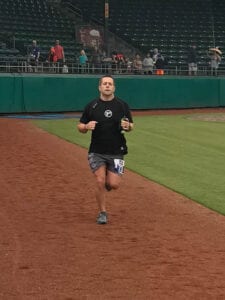 They can go to our website at www.WhitetailInstitute.com or they can give us a call at 1-800-688-3030. To the point that you’re making, Bruce, we want to sell our seed to everybody that we can. We do get these calls and they’ve been not planting our stuff, but they have a question. We want to encourage them to call just as much as somebody that’s prepared to buy our seed. When you’re going out there to make a food plot, it can be intimidating. You’re asking a regular everyday guy to be a farmer all of a sudden. There’s a lot that goes into it. Our goal is for everybody to have a successful food plot and to help them out. If they’re not buying our seed right now, maybe we’ll give them our help to get them a successful food plot. We hope that they remember that and they say, “They gave me the help that I needed. I’m going to give those guys a shot next year. I was already planning on buying it this year.” We don’t want people to feel that if they call our customer service, we’re going to say, “If you’re not buying seeds, we’re not going to talk to you about it.” We want to talk to you. We want to help you out because we want everybody to be as successful as they can be when they go out on this venture.
They can go to our website at www.WhitetailInstitute.com or they can give us a call at 1-800-688-3030. To the point that you’re making, Bruce, we want to sell our seed to everybody that we can. We do get these calls and they’ve been not planting our stuff, but they have a question. We want to encourage them to call just as much as somebody that’s prepared to buy our seed. When you’re going out there to make a food plot, it can be intimidating. You’re asking a regular everyday guy to be a farmer all of a sudden. There’s a lot that goes into it. Our goal is for everybody to have a successful food plot and to help them out. If they’re not buying our seed right now, maybe we’ll give them our help to get them a successful food plot. We hope that they remember that and they say, “They gave me the help that I needed. I’m going to give those guys a shot next year. I was already planning on buying it this year.” We don’t want people to feel that if they call our customer service, we’re going to say, “If you’re not buying seeds, we’re not going to talk to you about it.” We want to talk to you. We want to help you out because we want everybody to be as successful as they can be when they go out on this venture.
What’s your connection with Iowa Deer Classic?
That’s a show that we exhibited every year. It’s a good show for us. It’s right there in the heart of the Big Buck Country as everybody knows and it’s a good show. A lot of the consumer shows are good shows. We have a dealer and distributor network out there, but it’s an option to where we’re able to come face-to-face with the public. They’re able to come to our booth and buy something. They’re able to pick our brains right there on the spot. We’ve got the seed right there. Sometimes, some people like that face-to-face contact versus a phone call or chat over online. It gives that opportunity and it’s displaying their support to the entire growth of the outdoor industry. It gives support to all the other vendors that show up there to support the classic. It’s a good show. It’s always a good turnout and we look forward to supporting those guys every year.
How do people get in touch with you?
They can go to our website www.WhitetailInstitute.com or they can call in toll-free at 1-800-688-3030.
To me, deer hunting is 365. I’m either helping the deer with cover, helping the deer with food, watching deer progress through the year than trail cameras and hunting and the whole cycle again. Where should we be right now in the food plot cycle of the year?
There’s not a whole lot you can be doing right now. A large part of the country is still potentially under snow and is cold. We are quickly approaching what we call frost seeding. A lot of guys will go out and make frost seed clover and chicory in the spring. It’s a very effective method of seeding, whether you’re doing it on frozen ground or snow even. That’s coming up quick. Whether you’re frost seeding new ground or frost seeding over an existing plot especially these plots up north that can take a beating in a hard winter. You’re going to lose some plants and the deer are going to eat it down to nothing trying to find food. It’s a good time of the year. We hang our hat on the food plot side of things and that development. We do offer nutritional supplements also. Now is a good time to be feeding your deer like with our Thrive. It’s a feed that we developed just to keep these deer healthy. The healthier that they can come out of winter and into spring, the less buildup that they’re going to have to do to start antler growth. You want the doe to come out as healthy as they can because they’re raising the next generation of deer.
A healthier deer is going to be able to fight off potential diseases and survive. Share on XSupplemental feeding right now is a good thing with a good feed. Check your labels on that. Look for the right components that you needed to get them through to come out healthy. It’ll be time to transition from your winter feeding going into spring and rolling right over into mineral supplementation to support your bucks and the antler growth and not to forget about the does. It’s as important as they drop their phones. The mineral supplements helped with doe lactation also. It’s not just about building the bone on top of that. It’s just as much as building a healthier fawn. You’ll have a higher survival rate and just help your deer in general. There’s a lot of talk about diseases and various kinds these days. There are a lot of other people in the industry that are screaming this type of message too. A healthier deer is going to be able to fight off potential diseases and survive. Some of these diseases don’t have a cure for or anything like that. Just like a human, a healthier human is able to withstand more than an unhealthy human. If you’re trying to manage your herd, the objective of keeping them healthy year-round will pay off in your long-term goal.
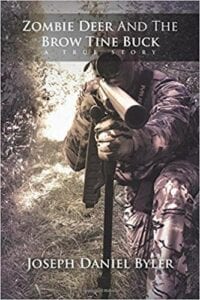
Just something about the health of the herd. A friend of mine, Joseph Byler, wrote a book, Zombie Deer and the Brow Tine Buck and he had a five-acre honey hole little swamp in a rural suburban setting. He got a swamp, he got food, then he got houses and he got roads. He put mineral out there all year round and there were two deer that made it through EHD. He killed it. He harvested it and it was fine. It was a huge deer. It was 6.5 years old. His running mate was ten point. They both were 170 class deer and above. All the other deer, they would find them in the rivers or they find them in the marsh and they could smell them dead in the marsh. Those two deer made it. I don’t know the information but it just goes along with the best minerals in their body to fight that disease and they survived.
That’s exactly what we’re telling customers. There are some other good companies out there that are telling the same. That’s the word that we all need to be sending to consumers. There’s no magic bullet that’s going to heal it. It goes back to a healthier deer and a healthier herd. They’re stronger when it comes time to fight off an ailment or whatever they might come in contact with.
Become a 365 hunter but become a 365 steward and they’re one and the same. If you take good care of your deer, then you’re going to have some exciting times come into fall. I live myself on the farm that I hunt and every year I can’t wait to mix it up with some mature bucks. More times than not, they win but that’s okay. I don’t have any problem with that. They are there. This 2019, we had four mature bucks. We killed one of them. I had the other one in front of me and I didn’t shoot him, but that’s okay. The other two we never saw. It’s 50% and I guess that’s good. Daryl Cherry, thank you so much for representing Whitetail Institute on this promo for Iowa Deer Classic folks. If you’re within 500 miles of Des Moines, Iowa, go to Iowa Deer Classic. My good friend is going to be there on The Season TV, the headliners, they’re going to be there. If you ever want a chance to get their autograph, hear them, see them, just show up. There are people throughout the country that are going to be there and Whitetail Institute is going to be there with a double booth. It’s been great, Daryl. Thank you so much for being a guest.
Thank you for interviewing. It is an honor. I appreciate it. Everybody who wants to come out and attend the show, stop at the Whitetail Institute booth and give us a few minutes of your time.
Important Links:
- Whitetail Institute
- PRADCO Outdoor Brands
- Texas Hunter Products
- Iowa Deer Classic
- Zombie Deer and the Brow Tine Buck
- https://www.WhitetailInstitute.com/Video-Gallery/
- http://www.WhitetailInstitute.com/
- https://www.WhitetailInstitute.com/Products/
About Daryl Cherry
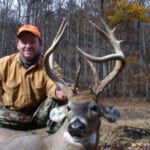
The Whitetail Institute created the food plot revolution in 1988. We not only started it but continue to lead the way by providing the best products, continuing to invest heavily in R&D, customer service that is unequaled and also because of the results our customers get.
